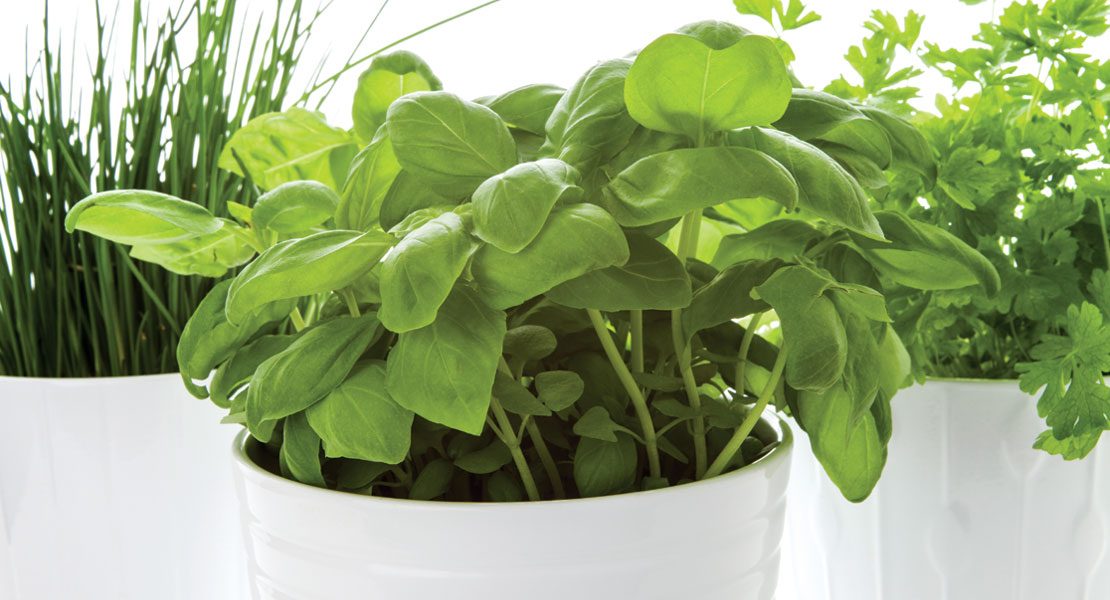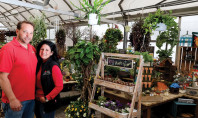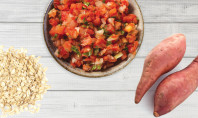Container Gardening 101

There’s nothing like the taste of homegrown vegetables, straight off the vine. Container gardening makes it possible to enjoy your own tomatoes, peppers, peas, beans, herbs, and other garden delights without even leaving your home. Whether it’s just a corner on your back deck or an entire portion of your backyard, container gardening can bring a lot of enjoyment, especially when you rent or you just don’t really have enough space for a traditional garden.
Container gardening can be fun and fulfilling for beginners and avid gardeners alike. Gardening of any kind can be a great activity to share amongst generations, from grandparents passing down heirloom plants, tips and stories to young children just learning about the world around us. Container gardening is a relatively inexpensive hobby, and a great way to help usher in springtime after this crazy winter and bitter cold temperatures we’ve endured.
Getting Started
“As long as you have a pot as a container you are in good shape because that is what you need,” says Glenn Panick, General Manager, Neighbors Home & Garden Center in Hellertown. “You can use a plastic pot; it doesn’t have to be terra cotta or heavy. You can grow anything from peppers to tomatoes on your patio. There’s quite a variety of things you can grow in containers. They have some type of corn now that is hybrid corn for containers, a patio corn.”
It takes very little to get started with container gardening. The materials are fairly basic – flowerpots or other containers, a good quality potting medium or mix, a simple hand trowel, fertilizer, and of course, your baby plants or seeds. You can even find complete kits that come with most of the supplies you need to do a container garden at home. In fact, for the very least startup maintenance of all, you can buy potted plants, herbs, or flowers and simply place them in the desired locations around your home and property.
“If you have the time to do it and patience to do it, starting them indoors is great because you can then pick a lot more varieties,” Panick says. “If you are going organic, you can choose organic seeds; also heirlooms, the old world type of seeds that produce the flavor that you miss in tomatoes anymore.”
They are easy to set up and convenient to maintain, often with a simple watering can just outside your doorstep.
Starting a container garden is a fun project that you can accomplish in just a few hours’ time. Whatever you decide, you can start your container garden outside around the same time you would begin a traditional garden, right around Mother’s Day.
What to Grow
Some of the most popular container garden vegetables are tomatoes, pepper plants, beans, peas, and herbs. The new hybrid “patio corn” can be a fun option to try in your rotation. It is also possible to grow potatoes similar to a container style process using a special potato bag. Strawberries do well in containers, particularly strawberry jar containers, where you place the individual strawberry plants each in one of the exposed pockets of the jar.
Herbs are typically wide open in terms of what you can grow in a container. Complete herb gardens make it easy to stay on top of your favorite recipes, even at a moment’s notice, and the maintenance takes very little time and effort.
Making the Most of Your Space
Some resourceful tactics in arranging your container garden can help you maximize your space, growing a larger number of plants in smaller spaces creatively. Panick recommends looking into containers that can hug the contours of a deck railing. These containers can be especially functional when you don’t have a lot of floor space for your plants. He says several different ways exist to attach a container to a railing or to suspend one from it if you need to get your plants off the ground.
You may also be able to tier your container garden as long as you provide ample room for the bushier plants to grow upward and outward. Herb gardens can work especially well in a tiered format, organized aesthetically on a plant rack or along your outdoor steps.
Special Care & Tips
For the most part, container gardens require less maintenance and upkeep than traditional gardens. They are easy to set up and convenient to maintain, often with a simple watering can just outside your doorstep. It’s important to note that containers tend to dry out faster than gardens grown directly in the ground, so you may have to place a little extra emphasis on watering, sometimes as much as twice per day in the heat of the summer.
“What happens with container gardening, once plants become a decent size, they tend to drain the nutrients fairly quick, as there’s not a lot there,” says Panick. “So you need to frequently fertilize the plants. Caution: do not over-fertilize. Over-fertilization tends to create more plant growth and not enough fruit production. You can get away with fertilizing three times a season. Organic fertilizing is a plus as it tends to be slow release and maintains nutrient value longer in the soil.”
Panick also recommends staking the plant well in a container to give it good support. Without the support, the stronger winds can even knock over your containers. Plants like peas and beans may require a trellis to give the needed support.
From a pest perspective, container gardens seem to escape many of the common menaces that go after typical gardens, such as rodents, moles, groundhogs, and other critters. Containers aren’t safe from insects like aphids and grasshoppers or from fungus, though, so some special care may be warranted. Panick explains that any topical issues still call for the same maintenance protocols as gardening directly in the ground.
Weeding should be negligible thanks to the separate soil and growing area. And when the growing season finally concludes, it’s extremely easy to put your container garden to bed.
“It’s really nice, you can just let them go and not worry about it, deal with them when the weather breaks,” says Panick. “[At that point,] pull out the old plant, fluff up the soil, give it some nutrients, fertilizer, and you’ll be good. After the second year, replace part of the soil.”
Most container gardens can pretty much pay for themselves and then some. Garden fresh, homegrown vegetables, fruits and herbs taste great and even if you aren’t up to sustaining a full container garden, it’s relatively simple and carefree to spruce up your property with a pot or two of annuals, some select perennials, or a few ornamentals. Whatever you choose, the container garden creates an appealing display and the growing process becomes a fun memory for the
entire family.















